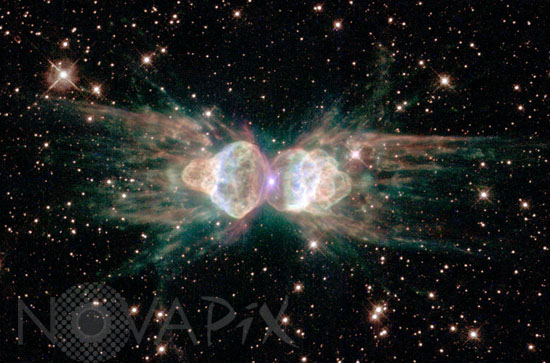Photo Agency - Astronomy - Space - Nature

The Ant nebula (Mz3) in Norma
author: Nasa/Novapix
reference: a-nep98-00500
Image Size 300 DPI: 9 * 6 cm
Though approaching the violence of an explosion, the ejection of gas from the dying star at the center of Mz3 has intriguing symmetrical patterns unlike the chaotic patterns expected from an ordinary explosion. Scientists using Hubble would like to understand how a spherical star can produce such prominent, non-spherical symmetries in the gas that it ejects. One possibility is that the central star of Mz3 has a closely orbiting companion that exerts strong gravitational tidal forces, which shape the outflowing gas. For this to work, the orbiting companion star would have to be close to the dying star, about the distance of the Earth from the Sun. At that distance the orbiting companion star wouldn't be far outside the hugely bloated hulk of the dying star. It's even possible that the dying star has consumed its companion, which now orbits inside of it. A second possibility is that, as the dying star spins, its strong magnetic fields are wound up into complex shapes like spaghetti in an eggbeater. Charged winds moving at speeds up to 1000 kilometers per second from the star, much like those in our Sun's solar wind but millions of times denser, are able to follow the twisted field lines on their way out into space. These dense winds can be rendered visible by ultraviolet light from the hot central star or from highly supersonic collisions with the ambient gas that excites the material into florescence. No other planetary nebula observed by Hubble resembles Mz3 very closely. Instrument: WFPC2 Exposure Dates: July 20, 1997; June 30, 1998 Total Exposure Time: 1.7 hours
Contact : Stéphane Aubin +33-(0)9-51-26-53-76
© Novapix - All rights reserved


